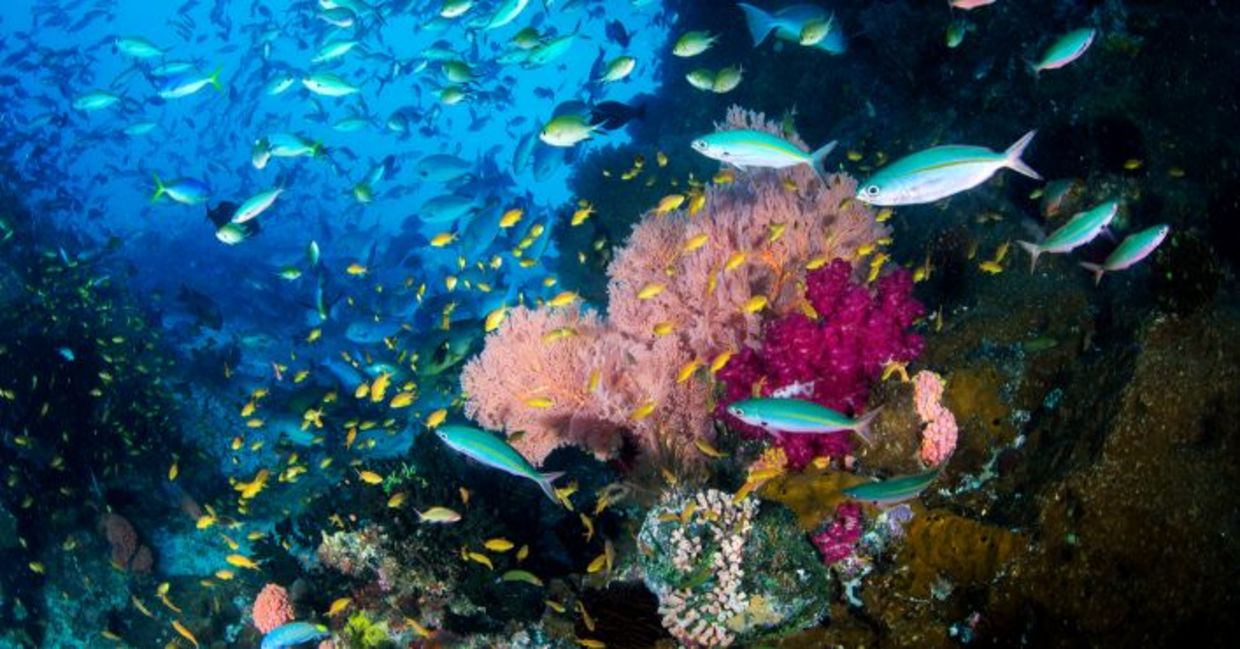
(J.S.Lamy / Shutterstock.com)
Most of us know about the benefits of protecting our skin from the sun through the use of sunscreens, but not everyone is aware of the environmental cost to corals of most commonly used sunscreens. The good news is that a young scientist, Michał Styczyński, has just stumbled upon a compound made by bacteria found in Antarctica, that can be used as an effective, natural UV radiation filter, as reported on Science in Poland.
Posting on social media the University of Warsaw said: “PhD student Michał Styczyński discovered a substance from the melanin category which can be used as an effective, natural UV filter in Antarctic bacteria (eliminating synthetic ingredients of creams… https://t.co/EVvrXNatt6 pic.twitter.com/YGMlyPJ58F
— Uplifting News by Qwyck (@upnewsbyqwyck) December 25, 2021
And unlike oxybenzone, the active UV filter found in mass-produced sunscreens, it will not lead to coral bleaching that endangers corals.
The promising science behind the newly-identified, natural UV filter
According to thefirstnews.com, a PhD researcher at the University of Warsaw’s Department of Biology, has made the world’s first discovery of a natural UV filter that has the potential to replace environmentally-damaging synthetic UV filters widely used in cosmetics, with reef-friendly ones.
Studying cold-loving bacteria naturally found in the Antarctic, Styczyński discovered that if subjected to the right environmental stress, the bacteria produce a melanin-like substance as a by-product of their metabolic process. It is this material that Styczyński suggests can be produced at scale when the bacteria are correctly stimulated. It can then be used as an effective, natural UV filter, instead of harmful chemicals.
In addition, this young scientist emphasizes to Science in Poland that the compounds produced by the bacteria have the ability to catch free radicals, which also makes them interesting to producers of skincare and anti-ageing cosmetics.
Why do some chemical sunscreens impact coral reefs?
The Earth’s coral reefs, considered some of the most diverse and valuable ecosystems in the world because they support multiple marine species, and sustain billions of people through tourism, face serious threats from the impacts of factors like climate change, coastal development and invasive species.
But scientists have also found that some of the chemicals found in sunscreen, particularly ones containing chemicals like oxybenzone, rather than the physical, mineral-based ones with zinc oxide and titanium dioxide, can threaten the health of ocean coral reefs in places like Hawaii. It is thought that synthetic sunscreen chemicals cause permanent DNA damage to coral, reported abc NEWS , preventing its recovery from storms, sedimentation, and climate change.
As the National Ocean Service of the US Department of Commerce outlines, when corals are stressed by changes in conditions such as light or nutrients, they expel the symbiotic algae living in their tissues, causing them to turn white. When a coral bleaches, it is still a living form, but it is under more stress and at far greater risk of mortality.
According to Dr. Craig Downs, directing the nonprofit Haereticus Environmental Laboratory in Virginia, as quoted by abcNEWS, "Sunscreen pollution can impact not just coral, but potentially all of the organisms on a coral reef," including fish, seagrass, sea turtles and other marine mammals.”
Studies like this one from the National Academies of Sciences, Engineering and Medicine in the US, are reviewing the environmental impact of sunscreens on aquatic environments. These are also aimed at helping consumers understand if “reef-friendly” labels on sunscreens are actually credible.
YOU MIGHT ALSO LIKE:
This New Pavement Spray Could Bring TLC to Cities!
A Bounty of New Corals Found on the World’s Largest Coral Reef
Alternative Sunscreen Could Help Corals And Skin Health at the Beach







